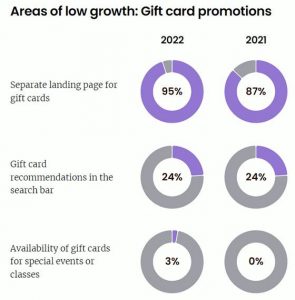— November 20, 2017
Your customers are getting more sophisticated. Consumers are getting savvier. When it comes to your e-commerce start-up, you should be too.
E-commerce is still going strong and shows no sign of stopping. In fact, the industry grew by more than 15% to just under $ 400 billion last year, and e-commerce made up over 40% of the retail growth. When it comes to mobile e-commerce, online merchants have to continually adapt to ever-evolving e-commerce technologies in order to acquire and maintain a competitive edge.
An e-commerce start-up may have an advantage in that it won’t have legacy issues and can implement mobile-first strategies more readily. On the other hand, they still need to enhance their infrastructures with the new technologies.
Here are five ways e-commerce start-ups can set themselves apart from the pack.
1. Work That Social Media Marketing
Starting up an e-commerce venture and not piggybacking off of social media would be like printing off business cards and then keeping them in the top drawer of your desk. Wasted opportunities. By 2018, an estimated 2.5 billion people will be social media users. Currently, close to 80% of marketers run online campaigns on social media.
Facebook, for example, is an excellent platform to start out on – it’s pretty user-friendly, can easily scale, and has incredible targeting options. You can hone in on age groups, particular countries or regions, or even start with your Facebook friends’ friends lists.
2. Give ‘Em Good Copy
Customers need to be wooed. Gone are the days when you could simply churn out product descriptions that only, well, described the product. The most successful online retailers make a beeline to their target audience, point out the benefits their products will provide – which will echo what the target audience wants.
Product descriptions look more like stories that pique the interest rather than catalog entries. There won’t be blunt assertions that products are of high quality – everyone says that about their products – but technical details that infer high quality. They are reader-friendly, using bullet lists that are easy to scan, headlines, and legible font.
3. Processing with the Right Partners
Finding the best online payment processor can make a huge difference in your e-commerce operations. The most popular processors can typically charge between 0.2-4.9% of your transaction price, depending on the business type and may also charge up to 30 cents on top of that. Apart from transaction rates, you should also consider the following when you are choosing your online payment processor:
- Ease of set-up and use
- Contracts and service terms
- Types of currencies offered
- Types of payments accepted
- Funding and processing time
- Merchant services
- Customization options
- Reporting and analytics
- Fraud and merchant protection
- Customer service
4. Cherish Chatbots
Think of chatbots as those smiling shop greeters and sales staff at flagship stores who engage customers and help them find what they are seeking. As in real life, you can ignore them, but there are times when they can really help you out. Some chatbots are akin to the telephone operators from the last century who were connecting calls and providing information when callers needed it. Some are more sophisticated, even facilitating transactions in the chat windows themselves.
So-called “conversational commerce” is becoming more prevalent on product and brand web sites. Perhaps there really is something comforting about feeling as though there were actually a live person waiting to assist us.
5. Keeping It About the Customer
Customer service will never go out of style because customers will always want to be heard. They want prompt remedies, respect, and appreciation for their business. Getting it right can be a bit tricky, though.
If it’s difficult for customers to reach a representative when they want one, or if there is a backlog and the customer is left waiting for a response, they won’t be happy. Just like the last time you were put on hold for a ridiculously long time. Overcompensating – by bombarding customers with messages or pop-up chat windows, for example – will also alienate them. It would be the equivalent of having that store person following you around and hovering by you when you just want to browse. Instead, engineer it so that live chat is enabled in certain conditions, such as if a customer abandons a cart.
You Can Do It!
E-commerce will be the wave of the future, and the possibilities are infinite. By knowing your customers and how to get through to them, you can find your online niche and thrive.
Digital & Social Articles on Business 2 Community
(75)
Report Post








